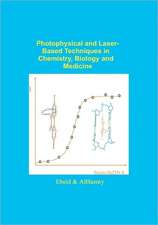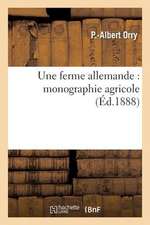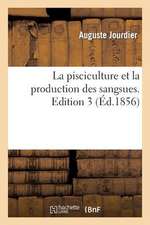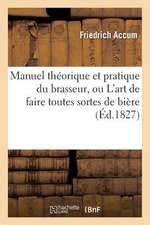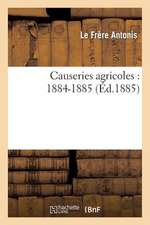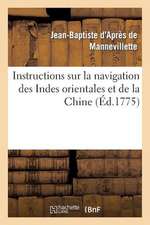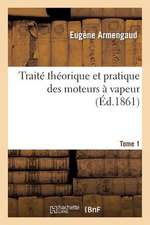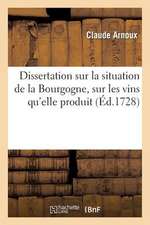Modified Atmosphere Packaging of Foods – Principles and Applications: Institute of Food Technologists Series
Autor D Sun Leeen Limba Engleză Hardback – 17 feb 2021
Din seria Institute of Food Technologists Series
- 24%
 Preț: 873.13 lei
Preț: 873.13 lei - 9%
 Preț: 1731.83 lei
Preț: 1731.83 lei - 9%
 Preț: 1688.98 lei
Preț: 1688.98 lei - 9%
 Preț: 781.60 lei
Preț: 781.60 lei - 9%
 Preț: 1271.45 lei
Preț: 1271.45 lei - 5%
 Preț: 1511.59 lei
Preț: 1511.59 lei - 9%
 Preț: 1315.50 lei
Preț: 1315.50 lei - 33%
 Preț: 1174.39 lei
Preț: 1174.39 lei - 32%
 Preț: 511.78 lei
Preț: 511.78 lei - 32%
 Preț: 1322.80 lei
Preț: 1322.80 lei - 33%
 Preț: 1069.89 lei
Preț: 1069.89 lei - 32%
 Preț: 1400.27 lei
Preț: 1400.27 lei - 33%
 Preț: 1231.95 lei
Preț: 1231.95 lei - 32%
 Preț: 1144.36 lei
Preț: 1144.36 lei - 33%
 Preț: 1240.97 lei
Preț: 1240.97 lei - 32%
 Preț: 1110.71 lei
Preț: 1110.71 lei - 33%
 Preț: 1173.65 lei
Preț: 1173.65 lei - 32%
 Preț: 1136.26 lei
Preț: 1136.26 lei - 32%
 Preț: 1083.43 lei
Preț: 1083.43 lei - 33%
 Preț: 1068.10 lei
Preț: 1068.10 lei - 32%
 Preț: 1044.87 lei
Preț: 1044.87 lei - 32%
 Preț: 1179.78 lei
Preț: 1179.78 lei - 32%
 Preț: 1024.16 lei
Preț: 1024.16 lei - 32%
 Preț: 1058.76 lei
Preț: 1058.76 lei - 33%
 Preț: 1040.72 lei
Preț: 1040.72 lei - 31%
 Preț: 527.09 lei
Preț: 527.09 lei - 32%
 Preț: 992.34 lei
Preț: 992.34 lei - 32%
 Preț: 994.14 lei
Preț: 994.14 lei - 33%
 Preț: 857.73 lei
Preț: 857.73 lei - 33%
 Preț: 875.09 lei
Preț: 875.09 lei - 32%
 Preț: 986.96 lei
Preț: 986.96 lei - 32%
 Preț: 957.79 lei
Preț: 957.79 lei - 32%
 Preț: 984.76 lei
Preț: 984.76 lei - 33%
 Preț: 982.25 lei
Preț: 982.25 lei - 32%
 Preț: 927.73 lei
Preț: 927.73 lei - 32%
 Preț: 983.21 lei
Preț: 983.21 lei - 32%
 Preț: 1023.34 lei
Preț: 1023.34 lei - 32%
 Preț: 985.04 lei
Preț: 985.04 lei - 33%
 Preț: 928.77 lei
Preț: 928.77 lei - 31%
 Preț: 1144.24 lei
Preț: 1144.24 lei
Preț: 1199.10 lei
Preț vechi: 1394.31 lei
-14% Nou
Puncte Express: 1799
Preț estimativ în valută:
229.47€ • 249.18$ • 192.76£
229.47€ • 249.18$ • 192.76£
Carte disponibilă
Livrare economică 01-15 aprilie
Preluare comenzi: 021 569.72.76
Specificații
ISBN-13: 9781119530763
ISBN-10: 1119530768
Pagini: 448
Dimensiuni: 172 x 238 x 31 mm
Greutate: 0.82 kg
Editura: Wiley
Seria Institute of Food Technologists Series
Locul publicării:Chichester, United Kingdom
ISBN-10: 1119530768
Pagini: 448
Dimensiuni: 172 x 238 x 31 mm
Greutate: 0.82 kg
Editura: Wiley
Seria Institute of Food Technologists Series
Locul publicării:Chichester, United Kingdom
Notă biografică
Dong Sun Lee, Professor Emeritus, Kyungnam University, Changwon, South Korea.
Cuprins
Chapter 1: Chemical and Physical Properties of Gases Used in Modified Atmosphere Packaging (MAP)
1.1. Scope of food MAP
1.2. Chemical and physical properties of gases and water vapor used in MAP
1.3. Gas and vapor properties in terms of food packaging
1.4. Conclusions
References
Chapter 2: Atmospheric Dynamics in MAP of Foods
2.1. Behavior of gas state in response to environment
2.1.1. Flexible vs. rigid package
2.1.2. MA of mixed gases
2.1.3. Water vapor as a member of mixed gases
2.2. Transport phenomena of gases through package layer in MAP
2.3. Absorption/evolution phenomena of gases in food
2.3.1. Dissolution or absorption of gases in foods
2.3.2. Moisture sorption/desorption onto food
2.3.3. Food reactions producing and/or absorbing gases
2.3.4. Transpiration: release of water vapor from respiring foods
2.4. Absorption/release of gases in active packaging device
2.4.1. Gas absorption of scavenger: rate and equilibrium
2.4.2. Gas release from active packaging devices
2.5. Mass balance of gases in MAP
2.5.1. List of contributors to mass balance
2.5.2. Food, headspace, packaging device, package layer and environment
References
Chapter 3: Reactivity and Quality of Foods Interactive with MA
3.1. Food reactivity involving gaseous reactant or product
3.1.1. Respiration and other related physiological activities of fresh produce
3.1.2. Fermentative activity, anaerobic respiration and spoilage of packaged foods
3.1.3. Oxidation to absorb oxygen
3.2. Effect of MA on chemical and physical qualities of foods
3.3. Effect of MA on microbiological quality changes
3.3.1. Spoilage microorganisms
3.3.2. Probiotics or beneficial microorganisms
3.4. Effect of MA on sensory quality changes
3.5. Conclusive remarks
References
Chapter 4: Packaging Design: Systematic Approach
4.1. MAP design of respiring foods
4.1.1 The design based on steady state
4.1.2. The design based on whole history of gas concentration changes
4.1.3. Status of water vapor in fresh produce MAP
4.1.4. MA package or container accommodating variable respiration of fresh produce
4.2. MAP design of perishable non-respiring foods
4.3. MAP design of shelf-stable non-respiring foods
4.4. Conclusions
References
Chapter 5: Active Packaging Techniques to Modify Atmosphere in Food Packages
5.1. Introduction: active packaging to modify package atmosphere
5.2. Gas and vapor absorbers
5.2.1. Oxygen absorber
5.2.2. Carbon dioxide absorber
5.2.3. Moisture absorber
5.2.4. Absorber of other volatiles
5.3. Gas and vapor releasers
5.3.1. Oxygen emitter
5.3.2. Carbon dioxide emitter
5.3.3 Releaser of other volatiles
5.4. Optimized use of active packaging devices
5.4.1. Combined or harmonized use of active packaging functions
5.4.2. Optimized design of active MAP
5.5. Conclusions
References
Chapter 6: Preservative Packaging Techniques to Enhance the Effectiveness of MAP
6.1. Introduction
6.2. Antimicrobial packaging combined with MAP
6.2.1. Antimicrobial packaging vs. MA in microbial inhibition
6.2.2. Applications of antimicrobial packaging in combination with MAP
6.3. Antioxidative packaging combined with MAP
6.3.1. Antioxidant packaging vs. MA for oxidative stability of foods
6.3.2. Applications of antioxidant packaging in combination with MAP
6.4. Other packaging and supplementary tools harmonized with MAP
6.5. Conclusions
References
Chapter 7: Gas Indicators and Sensors Used for MAP
7.1. Indicators and sensors in MAP
7.2. Oxygen indicators and sensors
7.2.1. Types of oxygen indicators and sensors
7.2.2. Use of oxygen indicators and sensors
7.3. Carbon dioxide indicators and sensors
7.3.1. Types of carbon dioxide indicators and sensors
7.3.2. Use of carbon dioxide indicators and sensors
7.4. Miscellaneous gas and vapor indicators and sensors
7.5. Conclusive remarks
References
Chapter 8: MAP Applications for Respiring Foods
8.1. Fresh fruits and vegetables
8.1.1. Preservation benefits provided by MAP
8.1.2. Low oxygen equilibrated MAP
8.1.3. High oxygen-flushed MAP
8.1.4. Modified humidity MAP
8.1.5. Ethylene controlled MAP
8.1.6. MAP with non-conventional gases
8.1.7. Fresh produce MAP combined with other supplementary means
8.2. Reactive fermented food products
8.2.1. Problems in packaging of reactive fermented foods
8.2.2. Packaging to improve the probiotic product quality
8.2.3. Packaging to resolve problem of volume expansion or pressure buildup
8.3. Live seafoods
8.4. Conclusions
References
Chapter 9: MAP Applications for Non-respiring Foods
9.1. Introduction
9.2. Meat and poultry products
9.2.1. Preservation benefits of meat and poultry products attained by MAP
9.2.2. Simple O2-excluded packaging of meat and poultry products
9.2.3. O2-excluded or O2-reduced high CO2 MAP of meat and poultry products
9.2.4. High O2/high CO2 MAP of meat and poultry products
9.2.5. MAP combined with other hurdles for meat and poultry products
9.3. Seafoods
9.3.1. Benefits and limitations of MAP in preservation of seafoods
9.3.2. Simple O2-excluded packaging of seafoods
9.3.3. High CO2 MAP with O2 exclusion or reduction for seafoods
9.3.4. High O2/high CO2 MAP of seafoods
9.3.5. MAP of seafoods combined with other hurdles
9.4. Wet bakery and pasta products
9.4.1. Spoilage of wet bakery and pasta products and their preservation benefits by MAP
9.4.2. MAP applications for moist bakery products
9.4.3. MAP applications for fresh and pre-cooked pasta products
9.5. Cheese products
9.6. Dry food products
9.6.1. MAP applications for oxidative dry processed food products
9.6.2. MAP applications for raw and semi-processed dry agricultural products
9.7. Oxidative liquid foods
9.8. Miscellaneous perishable products
9.9. Conclusions
References
Chapter 10: Safety, Regulation and Consumer Issues
10.1. Food safety issues related with MAP
10.2. Regulations related with MAP
10.3. Consumer acceptance of MAP food products
10.4. Conclusions
References
Index





